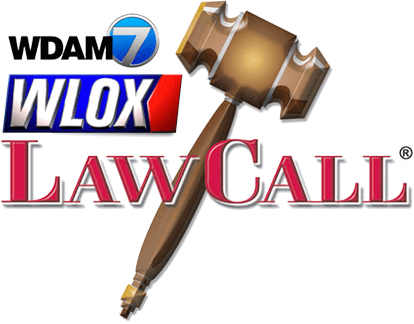Back-to-School Pedestrian Safety: Legal Rights When Children Are Injured in Mississippi School Zone Crossings
The end of summer brings a familiar mix of excitement and anxiety for families across Mississippi. While children look forward to seeing friends and starting new classes, parents are often preoccupied with their safety, especially during the daily commute to and from school. The chaotic scenes of morning drop-offs and afternoon pickups, filled with buses, cars, and children on foot, create a high-risk environment where a moment of inattention can have devastating consequences.
A child being struck by a vehicle in a school zone is one of a parent’s worst fears.
Why Are School Zones So Hazardous?
School zones are inherently dangerous due to a unique combination of factors that increase the risk of pedestrian accidents. A driver’s failure to adjust their behavior to these conditions is often the root cause of a tragic incident.
Key risk factors include:
- High Pedestrian Volume: Large groups of children, who can be impulsive and less aware of traffic dangers, are present.
- Traffic Congestion: A heavy concentration of cars, school buses, and delivery vehicles creates a complex and often gridlocked traffic pattern.
- Driver Distractions: Drivers may be distracted by their phones, talking to passengers, or the general chaos outside the vehicle.
- Impatience and Rushing: Parents and other drivers in a hurry to get to work or school may engage in unsafe behaviors like speeding or illegal U-turns.
- Unpredictability of Children: Young children may not accurately judge vehicle speed and distance, and they can dart into the street without warning.
- Weather Conditions: Rain, fog, or the glare of the morning or afternoon sun can reduce visibility for drivers.
Mississippi Laws Governing School Zones and School Buses
To combat these dangers, Mississippi has enacted specific laws that drivers are required to follow in and around school areas. These laws create a higher standard of care, and a violation can serve as strong evidence of negligence in a personal injury claim.
- School Zone Speed Limits: Mississippi Code § 63-3-515 allows municipalities to set special speed limits in school zones. These reduced speed limits, typically 15-20 mph, must be obeyed when yellow lights are flashing or during the times posted on signs. A driver exceeding the school zone speed limit is showing a clear disregard for student safety.
- Stopping for School Buses: Mississippi Code § 63-3-615, also known as “Nathan’s Law,” mandates that drivers approaching a stopped school bus from either direction, when the bus is loading or unloading children, must come to a complete stop. Drivers must not proceed until the bus resumes motion or the flashing red lights are turned off. The only exception is on highways divided by a median. Violating this law carries significant penalties and is a serious act of negligence.
What is the Legal Duty of Care for a Driver in a School Zone?
In any personal injury case, the first step is to establish the defendant’s “duty of care.” This is a legal obligation to act with a certain level of caution and prudence to avoid harming others. In a Mississippi school zone, that duty is significantly elevated. A reasonable driver is expected to exercise extreme caution, anticipating the possible presence of children and being prepared to stop suddenly.
This heightened duty of care means a driver must be more vigilant than they would be on a standard roadway. They are expected to:
- Actively scan for children on sidewalks and near crosswalks.
- Obey all traffic signals, signs, and the directions of crossing guards.
- Refrain from all distractions, including cell phone use.
- Drive at or below the posted school zone speed limit.
- Yield the right-of-way to pedestrians in crosswalks.
Proving Negligence in a School Zone Pedestrian Accident
When a child is injured, their family may have the right to file a personal injury claim to recover compensation. To succeed, their attorney must prove that the driver was negligent. This involves establishing four key elements:
- Duty: The driver owed the child a legal duty to operate their vehicle with heightened caution in the school zone. This is generally established by the fact that the driver was in a clearly marked school area.
- Breach: The driver breached or violated that duty. This can be shown through evidence of speeding, distracted driving, failing to yield, or violating a specific traffic law like Nathan’s Law.
- Causation: The driver’s breach of duty was the direct and proximate cause of the child’s injuries. The attorney must connect the driver’s specific careless act to the accident and the resulting harm.
- Damages: The child and their family suffered actual damages as a result of the injury. This includes medical expenses, pain, suffering, and other losses.
Who Can Be Held Legally Responsible for a Child’s Injuries?
While the driver of the vehicle is the most obvious defendant, they may not be the only party at fault. A thorough investigation may reveal that other entities contributed to the unsafe conditions that led to the accident.
Potential liable parties could include:
- The Negligent Driver: The individual whose careless or reckless driving directly caused the accident.
- The Driver’s Employer: If the driver was operating a commercial vehicle as part of their job, their employer might be held vicariously liable.
- The School District: A public or private school has a duty to provide a safe environment. Liability could arise from issues like negligent supervision of students during dismissal, poorly designed drop-off or pickup areas, or failing to have crossing guards at dangerous intersections.
- A Municipality or Government Entity: The city or county responsible for road maintenance could be liable if the accident was caused by a malfunctioning traffic signal, a crosswalk in poor condition, or overgrown foliage obstructing a driver’s view of a sign. Claims against government bodies in Mississippi are complex and have specific notice requirements.
How Does Mississippi’s Comparative Negligence Rule Apply to Children?
Opposing attorneys and insurance companies often try to shift blame onto the victim to reduce their liability. In Mississippi, this is done through the legal doctrine of “pure comparative negligence.” This rule allows a jury to assign a percentage of fault to each party involved. An injured person’s compensation is then reduced by their percentage of fault.
However, applying this rule to children is different. Mississippi law recognizes that a child’s ability to appreciate danger depends on their age and maturity.
- Children Under 7: A child under the age of seven is legally incapable of being negligent. They cannot be held at fault for their own injuries.
- Children Between 7 and 14: A child in this age range is presumed to be incapable of negligence, but this presumption can be challenged. The opposing party would have to present evidence that this specific child had the maturity and intelligence to comprehend and avoid the danger.
- Children Over 14: A child aged 14 or older is presumed to be capable of negligence and is expected to exercise a degree of care that is reasonable for a child of their age, knowledge, and experience.
An attorney’s role is to protect the injured child from unfair allegations of fault and to demonstrate to a jury why a driver’s responsibility is paramount in a school zone setting.
What Compensation Can Be Recovered in a Child Injury Claim?
A successful personal injury claim can provide financial resources to cover the immense costs associated with a serious accident. While no amount of money can erase the trauma, it can provide stability and access to necessary care.
Damages that may be recovered on behalf of an injured child include:
- Medical Expenses (Past and Future): This covers everything from the initial emergency room visit and hospitalization to ongoing needs like physical therapy, rehabilitation, counseling, and future surgeries.
- Pain and Suffering: Compensation for the physical pain, discomfort, and emotional distress the child has endured and may continue to experience.
- Emotional Distress and Mental Anguish: This addresses the psychological impact of the accident, such as anxiety, PTSD, fear of cars, and other emotional trauma.
- Permanent Disability or Disfigurement: If the injury results in a permanent physical limitation, scarring, or amputation, this element provides compensation for the lifelong impact.
- Loss of Future Earning Capacity: If the child’s injuries are severe enough to limit their ability to work and earn a living as an adult, a claim can be made for this projected loss of income.
- Loss of Enjoyment of Life: Compensation for the child’s inability to participate in and enjoy age-appropriate activities, hobbies, and life experiences.
Critical Steps to Take Immediately After a School Zone Accident
The actions a parent takes in the minutes, hours, and days following an accident can have a significant impact on their child’s health and their ability to pursue a legal claim.
- Prioritize Medical Care: Your child’s health is the top priority. Call 911 immediately and have them transported to the emergency room. A complete medical evaluation is vital, even if injuries do not seem severe at first.
- Report the Accident to Law Enforcement: Insist that a police report be filed. This report will serve as a foundational piece of evidence, documenting the date, time, location, parties involved, and the officer’s initial observations.
- Gather Information at the Scene: If you are able, safely collect the driver’s name, contact information, license plate number, and insurance details. Use your phone to take pictures of the vehicle, the accident scene, any skid marks, traffic signs, and your child’s injuries.
- Identify Witnesses: Ask anyone who saw the accident for their name and phone number. Their testimony can be invaluable in establishing what happened.
- Document Everything: Start a file to keep all accident-related documents, including medical bills, receipts for prescriptions, the police report, and any letters from insurance companies. Keep a journal detailing your child’s recovery, pain levels, and how the injury is affecting their daily life.
- Decline to Speak with the Driver’s Insurance Adjuster: You will likely receive a call from the at-fault driver’s insurance company very quickly. Do not give a recorded statement or accept any quick settlement offer. These early offers are almost always far less than the true value of the claim. Politely decline to speak and tell them your attorney will be in contact.
Discuss Your Family’s Legal Options with a Mississippi Personal Injury Attorney
Navigating the aftermath of a child’s injury is an overwhelming experience. Dealing with medical treatments, school absences, and emotional trauma leaves little energy for confronting a complex legal system and aggressive insurance companies. Having a skilled legal advocate on your side can make all the difference.
If your child has been injured in a pedestrian accident in a Mississippi school zone, you have rights. The attorneys at Reeves & Mestayer are committed to holding negligent parties accountable and helping families secure the compensation they need to move forward.
Contact us today at 1-855-558-2977 or reach out to us online for a free, no-obligation consultation to discuss your case.







